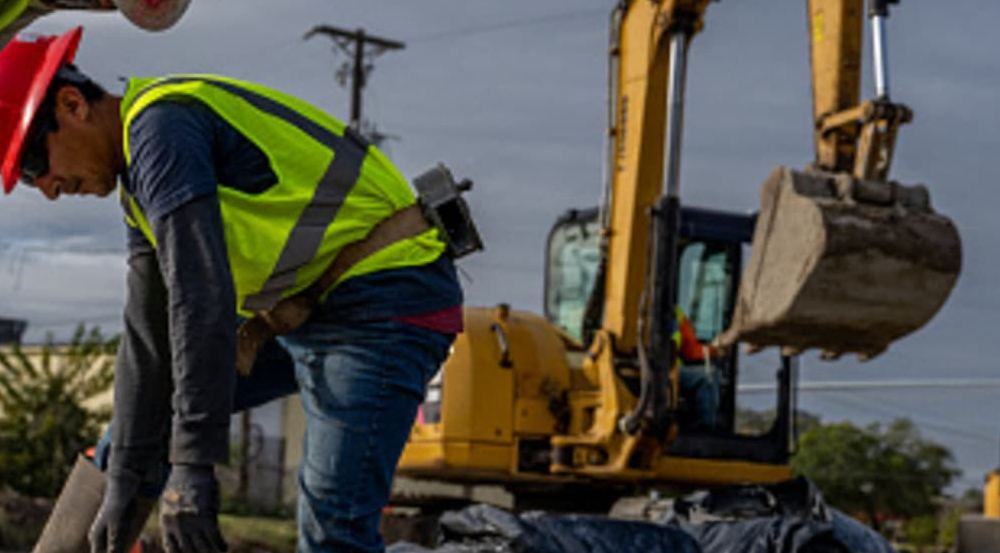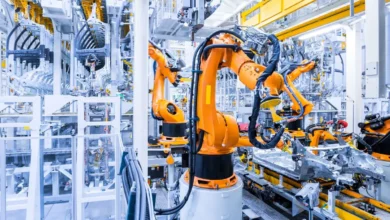
In today’s competitive manufacturing landscape, precision is a cornerstone of success. With companies always trying to minimize waste and improve efficiency by utilizing fewer resources to produce products and with the need to produce complex parts with high quality specifications, companies resort to the use of advanced technologies to satisfy this demand. Among these technologies, metal laser cutting stands out as a transformative method for achieving unparalleled precision in metal fabrication.
The Essence of Metal Laser Cutting
Metal laser cutting technology utilizes advanced laser technology to cut or etch materials into a desired shape and size. This process is fast and accurate due to the computer numerical control (CNC) that drives it, and can cut metals of all kinds.
Laser cutting finds application in the field of precision fabrication because it can make complicated shapes with smooth edges and small tolerances.
Advantages of Laser Cutting in Precision Fabrication
A major advantage of metal laser cutting in manufacturing is that it can produce consistency over the huge volumes of production, and hence have every component a carbon copy of the previous one. This consistency is important in areas where minute variations may lead to poor quality of the product or even product failure.
In addition, the amount of fine work that can be done using laser cutting would be almost unachievable using the old-fashioned mode of cutting work using a mechanical system.
Versatility in Material and Design
The laser cutting technology does not just cut through one type of metal or varying thickness, which leaves a significant opportunity for manufacturers. It can also be regarded as an all-purpose tool as it works equally well on stainless steel, aluminium, brass, and a variety of other alloys.
Laser cutting can be used in various fields, including automotive, aerospace, and medical equipment, with industry-specific needs taken into account accordingly.
Enhanced Efficiency and Sustainability
Manufacturing efficiency is not only focused on the speed of the manufacturing process, but also on reducing material waste and energy usage. Laser cutting can meet these requirements owing to its high level of precision, which leads to little wastage.
The precise nature of the laser beam ensures that cutting is done where it is necessary, with minimal scrap metal that would have otherwise been the order of the day with less accurate tools.
Streamlining Production with Modern Technology
By incorporating laser cutting into production lines, there is a great reduction in the secondary finishing processes to be done. The laser cutters provide clean cuts and high-quality edges, eliminating the need for deburring and further surface treatment in many situations.
Not only does this save time in the manufacturing process, but it also reduces labour costs, making the overall production cycle more efficient.
The Role of Software in Precision Laser Cutting
The use of advanced software is a very significant aspect of the functionality of laser cutting on metals. Complex designs can be fed directly into cutting machines, enabling automatic fabrication with an accuracy that manual operators cannot match. This digital means allows them to make fast changes and prototype, which gives manufacturers additional flexibility in adapting to market changes and consumer needs.
Complex Customisation for Diverse Needs
Laser cutting has the advantage of being especially useful in situations when unique components or initialised designs are required. It enables manufacturers to develop special components without the need for costly moulds or dies, thereby reducing production costs and time. This means that even smaller batch productions are economically viable, keeping up with the need for personalised and made-to-order product growth.
Safety and Precision Go Hand in Hand
One of the major benefits of metal laser cutting that is often not brought to the fore is the increased degree of safety associated with it. The fact that cutting is completed in a confined cutting area and that there is no physical contact between machinery and material reduces the possibility of accidents that are common in cutting by hand.
Safety considerations are crucial for creating a secure working environment, and at the same time, you cannot afford to compromise on the tight precision mindset.
Fulfilling the Demand for Quality
Given the fact that most of the consumers and industries are going to be quality-conscious in this world, laser cutting is necessary due to the level of precision it offers. Critical systems require metal parts and components that must be manufactured to precise specifications to ensure reliability and proper functioning.
Laser cutting steps up to the mark and can deliver the precision and high levels of quality control that these applications require.
Challenges and Considerations
Although laser cutting has many advantages, several factors must be considered, including the material’s thickness, the structure’s complexity, and the type of laser used. All these factors could affect the outcome and efficiency of the cutting operation.
Manufacturers should be wise to engage service providers that are technologically enabled to provide the service required and also have a good experience with the challenges.
Sustaining Innovation in Manufacturing
The ever-changing requirements of manufacturing translate to the ever-enhanced nature of laser cutting. Service providers who invest in the latest laser cutting technology and stay current with industry trends can offer their customers a competitive edge. Metal laser cutting is among the pioneering processes in the innovative developments and has pushed the accuracy of fabrication to an advanced level.
Looking Ahead
Metal laser cutting is becoming increasingly important as the manufacturing industry develops lighter-weight and more complex designs. The pursuit of efficiency, accuracy, and little waste leads to the use of technology, which has now become a standard in present manufacturing practices. Laser cutting is indeed breaking new ground in precision fabrication due to its practical ability to produce high-precision cuts in detail with accelerated speeds.
The use of metal laser cutting is one of the strategies that should be considered by companies that want to adopt the latest changes in precision manufacturing. The process not only increases the accuracy of the parts but also leads towards streamlining of the production process, enhanced safety, and sustainability of manufacturing processes, in general.
Conclusion
Metal laser cutting is not a technological process but a critical element (as to the future of manufacturing). It will enable the manufacturing of the parts that will be more accurate than ever before and it brings a new era of innovation and perfection in the market. Using this advanced technology, companies will be able to access accuracy, top quality of the products and eventually become a pioneer in the respective market.

















